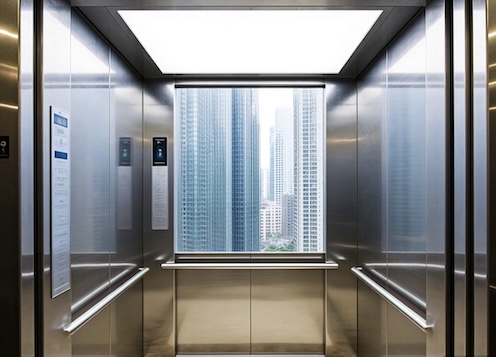Upon learning of your mother's passing, I am deeply saddened. Please accept my most sincere condolences. May you and your family find comfort during this difficult time. A five-star chain hotel once highlighted "LEED Gold Certification" as its core promotional feature. Its environmental designs such as photovoltaic panels and reclaimed water recycling received praise. However, after two years of operation, an energy audit report revealed concerns: elevator energy consumption accounted for 28% of the building's total electricity usage, far exceeding the industry benchmark of 12%-15%, and was also significantly inconsistent with the "8%" prediction made during the certification application.
The problem originated from a shortsighted decision made during the elevator bidding three years ago: The procurement team aimed to control the budget and chose a supplier whose quotation was 37% lower than the market average. The eight passenger elevators provided by this supplier adopted outdated asynchronous motor technology, with an energy efficiency rating of only level three (the lowest in China), and did not have an energy feedback device. This resulted in the braking electrical energy being entirely converted into heat energy and released, causing excessive heat in the machine room.

"At that time, we only considered the equipment purchase price and the bonus points for LEED certification, without conducting in-depth calculations of the energy consumption costs during the operation period," the hotel engineering director confessed at the review meeting. The cost of this short-sighted decision quickly became apparent: The temperature in the machine room often exceeded 45℃in summer, causing the elevator control system to frequently shut down due to overheating protection, with 23 unplanned outages occurring in 2024 alone, directly affecting the customer satisfaction rating.
The data reveals the harsh economic figures. The data from third-party energy efficiency testing institutions is more impactful:
Energy consumption comparison: The annual electricity consumption of each elevator in this hotel reached 42,000 kilowatt-hours, which is 2.1 times that of hotels of the same scale using first-level energy-efficient elevators;
Cost difference: Based on the local commercial electricity price of 1.2 yuan per kilowatt-hour, during a 10-year operation period, the high-energy-consuming elevators will spend an additional 5.04 million yuan on electricity bills, enough to purchase 4 brand-new first-level energy-efficient elevators;
Chain loss: The high temperature in the machine room causes the failure rate of the frequency converter to increase by 300%, and the air conditioning system needs to consume an additional 15% of electricity for cooling, forming a vicious cycle of "high energy consumption - more failures - higher energy consumption".
"It's like buying a luxury car with a fuel consumption of 20 liters per 100 kilometers, but then advertising that you are very environmentally friendly," pointed out Dr. Li, an energy management expert. "The LEED certification system only gives 5% weight to the energy efficiency of elevators, while the initial purchase cost can affect 20% of the score. This mechanism objectively induces enterprises to engage in short-sighted behavior."
The deeper issue lies in the lagging industry perception. The traditional elevator industry has long held the mindset of "emphasizing safety while neglecting energy efficiency". Many purchasers still believe that "the energy consumption of elevators is less than 30%, and there is little significance in optimization". However, the reality is that with the improvement of building intelligence levels, elevators have become the second-largest energy-consuming equipment in commercial buildings after air conditioners. A technical white paper from an elevator manufacturer shows that a first-level energy-efficient elevator using permanent magnet synchronous motors and energy feedback technology can reduce energy consumption by 42% compared to third-level energy-efficient products. If combined with group control systems for optimization, the overall energy-saving rate can reach over 55%.
Some pioneers have restructured the procurement logic. In Shanghai, a super-tall office building adopted the "10-year total cost (TCO)" model for the elevator bidding. After comprehensively considering factors such as equipment price and energy consumption, they selected the option with a 18% lower total cost. Although the initial quotation for purchasing the elevator was 25% higher, through technologies like energy recovery, the cost difference could be recovered within 6 years.
The policy drives change. In 2025, the revised version of the "Green Building Evaluation Standard" will increase the weight of elevator energy efficiency to 15%. It requires three-star green building projects to use elevators with first-level energy efficiency and energy feedback devices, promoting the industry to shift from "price competition" to "value competition".
When companies are spending lavishly to obtain "green certification", the hidden energy-consuming black hole of elevators, which lies in the vertical arteries of buildings, is quietly eroding the true value of their environmental protection investments. The key to breaking this deadlock lies in moving energy efficiency indicators from the bottom of the procurement list to the top, and replacing the initial investment mindset with a full life cycle cost mindset - after all, a truly green building should not be a "facade project" that masks high-energy-consuming equipment with solar panels, but rather a sustainable system where every detail can withstand energy consumption audits. If you have any questions, please feel free to let me know. I hope you and your father will always be well.
